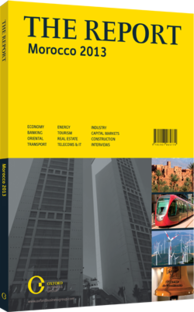OBG talks to Amina Benkhadra, General Director, National Hydrocarbons and Mining Office (ONHYM)

Interview: Amina Benkhadra
To what extent is the exploitation of gas resources profitable given current oil prices?
AMINA BENKHADRA: First of all, ONHYM is already producing gas in the Gharb Basin and gas and condensate in the Essaouira Basin. In 2011 gas production reached over 37m normal cubic metres. An economic feasibility study is always conducted in advance of operations. Circle Oil has discovered several gas findings of modest size in the Gharb basin. The exploitation of these deposits is now under way. In order to enlarge its portfolio, Circle Oil is now undertaking a new exploration programme. Following the emergence of non-conventional “shale gas” in countries such as the US, ONHYM is now preparing promotional campaigns to attract international companies with the requisite expertise to exploit these resources. For ONHYM, the quantities produced, even if modest, are very important as they can go to local clients, avoiding the need to call on foreign exchange reserves. With respect to gas production in the Gharb and Essaouira basins, new wells will benefit from existing infrastructure because they only need to be linked to the network. As a result, once a certain quantity of gas has been produced, this becomes profitable and allows ONHYM to meet client needs.
What potential is there for exploiting oil shale?
BENKHADRA: Morocco possesses important oil shale reserves in three deposits in Timahdit, Tarfaya and Tangier. These deposits have been the subjects of several detailed studies since the 1970s. Since 2005, ONHYM has adopted a strategy based on a partnership with firms that can exploit oil shale resources. However, the exploitation of oil shale is subject to serious technological and environmental challenges. Indeed, there is no technical procedure in existence today that is good enough to be used for exploiting oil shale. If properly exploited, Morocco’s oil shale resources could lead to a reduction of the country’s energy dependence. ONHYM has already signed various agreements with firms that use state-of-the-art technology in this domain.
In terms of minerals and mining resources, which segments look to be most promising in terms of growth in the coming years?
BENKHADRA: Clearly phosphates will continue to dominate mining resources in Morocco, with 95% of total production. However, other metals and minerals are coming to the fore – gold, silver, copper, lead, zinc, tin, iron, niobium and some rare metals.
A number of high-density deposits of these types of resources have been found in and around basins from the Precambrian, Variscan and Mesozoic eras. Most of the current and prospective mining activity is taking place in the Anti-Atlas and Sahara region, especially as regards gold, silver, copper, lead and manganese. In the Atlas and Meseta areas one finds gold and polymettal-ic deposits. Nickel, gold-like minerals, crystallised magnesium, lead, zinc and industrial materials (bentonite and clay) are found in the Rif Mountains.
To what extent is environmental protection currently being prioritised within the country’s various extractive industries?
BENKHADRA: Environmental concerns remain at the forefront of the ONHYM’s concerns when it comes to prospection. The impacts of mining activity on the environment are varied; therefore, the Moroccan authorities have adopted regulations whereby exploitation is subjected to an environmental and social impact test involving representatives from local communities.
Various laws for the purpose of environmental protection had been adopted in conformity with international standards. These include a general law on environmental protection and restrictions on air and water pollution passed in 2003, and a law on waste management passed in 2006. Among the main rules are requirements to conduct an environmental impact study, containing or neutralising toxic gases or polluted wastewater, which contains harmful dust particles, to prevent air pollution and to launch new efforts to help protect the country’s local flora and fauna.
You have reached the limit of premium articles you can view for free.
Choose from the options below to purchase print or digital editions of our Reports. You can also purchase a website subscription giving you unlimited access to all of our Reports online for 12 months.
If you have already purchased this Report or have a website subscription, please login to continue.

